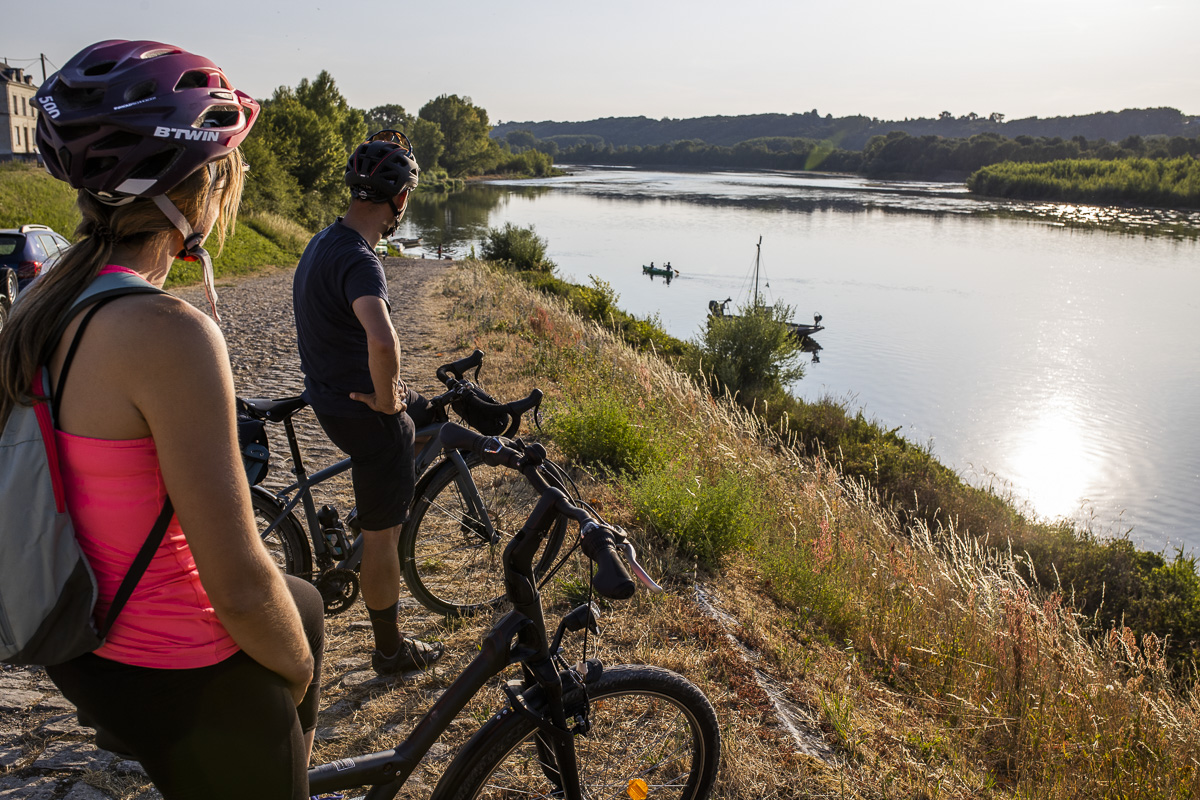Au fil de l'eau

Rivarennes
Au fil de l'eau
Easy
1h30
16,6km
+142m
-140m
Loop
Embed this item to access it offline
Description
1. Rivarennes, village de la Poire Tapée
Speciality of Rivarennes, Poires Tapées are dried in the traditional manner in a wood oven. This ancient artisan product, which had disappeared by the 1930’s, was revived by a local association in 1988. Today, a number of artisans are developing a production based on the traditional methods which is presented in the « Maison de la Poire Tapée » scenography.
2. L'indre et le vieux Cher
The Indre enters the Loire Valley at Bréhémont, dividing into a number of small branches. The Vieux Cher is an old branch of the Cher. The valley of the Vieux Cher is the ideal place for close observation of flora and fauna. You can also discover the « Bardeaux de l’Indre » natural area.
3. Bréhémont
This charming village offers a great view of the Loire and its islands. The variations in the flow of the longest river in France are a critical problem for the population living on its banks. A major nesting and migration site, the Loire is also very popular for boating activities. Bréhémont is the meeting point of the Loire à Vélo and Indre à Vélo routes. The hydrogen-powered bicycle can be hired here. Also note the metal work of art, which illustrates all the special features of Bréhémont.
4. Ancienne confluence du Cher
During the 18th century, it was decided that the Cher should be diverted by closing it off at Rupuanne in the commune of Bréhémont and by building a dam-overflow at Villandry. This is how this part of the Cher became the Vieux Cher.
Speciality of Rivarennes, Poires Tapées are dried in the traditional manner in a wood oven. This ancient artisan product, which had disappeared by the 1930’s, was revived by a local association in 1988. Today, a number of artisans are developing a production based on the traditional methods which is presented in the « Maison de la Poire Tapée » scenography.
2. L'indre et le vieux Cher
The Indre enters the Loire Valley at Bréhémont, dividing into a number of small branches. The Vieux Cher is an old branch of the Cher. The valley of the Vieux Cher is the ideal place for close observation of flora and fauna. You can also discover the « Bardeaux de l’Indre » natural area.
3. Bréhémont
This charming village offers a great view of the Loire and its islands. The variations in the flow of the longest river in France are a critical problem for the population living on its banks. A major nesting and migration site, the Loire is also very popular for boating activities. Bréhémont is the meeting point of the Loire à Vélo and Indre à Vélo routes. The hydrogen-powered bicycle can be hired here. Also note the metal work of art, which illustrates all the special features of Bréhémont.
4. Ancienne confluence du Cher
During the 18th century, it was decided that the Cher should be diverted by closing it off at Rupuanne in the commune of Bréhémont and by building a dam-overflow at Villandry. This is how this part of the Cher became the Vieux Cher.
- Departure : Rivarennes
- Arrival : Rivarennes
- Towns crossed : Rivarennes, Cheillé, and Bréhémont
Forecast
Altimetric profile
Information desks
4 Rue du Château, 37190 Azay-le-Rideau
Report a problem or an error
If you have found an error on this page or if you have noticed any problems during your hike, please report them to us here: